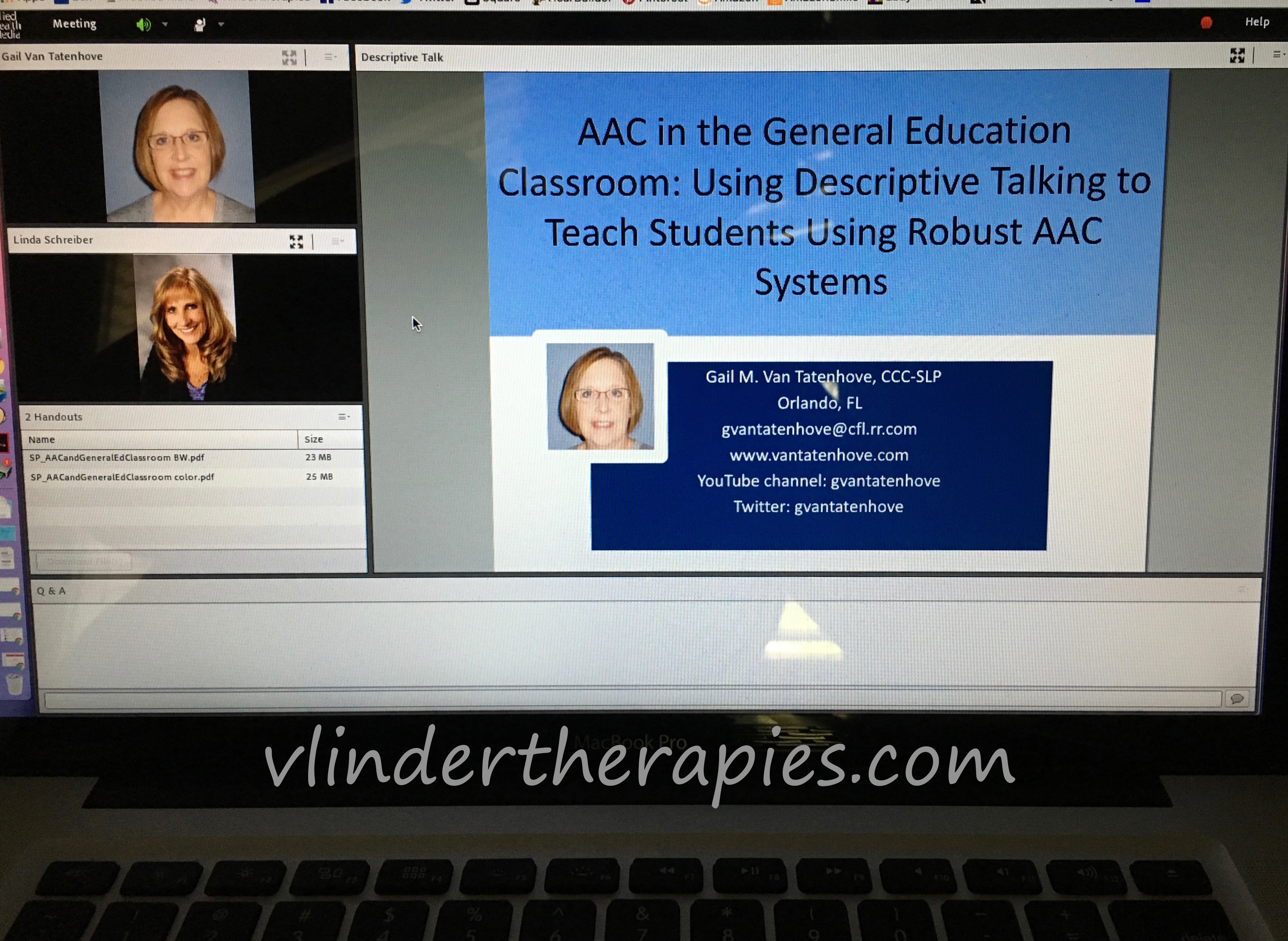October is AAC Awareness Month! All this week I am attending a live webinar series on SpeechPathology.com called:
2016 Nancy McKinley Lecture Series: Topics in AAC

Day 4
AAC in the General Education Classroom: Using Descriptive Talking to Teach Students Using Robust AAC Systems
Presenter: Gail Van Tatenhove, CCC-SLP
Wow, was today's session fast-paced and jam-packed with information! We had the pleasure of hearing Gail Van Tantenhove, CCC-SLP speak about an intervention strategy she calls "descriptive talking", which is a technique that focuses on using core words for lesson-specific words. In other words, defining concepts and lesson specific vocabulary using core words already in the student's AAC device.
The average active speaking vocabulary of an adult is 20,000 words. Core words are common, frequently used, versatile words making up ~80% of the words we say. Amazingly, these words come from a set of just 250-350 words! When we think about it, core words are really the "words for life"!
Using and teaching "descriptive talking" with a student using AAC facilitates and supports their learning of these "words for life". It also addresses the issue of highly specific, rarely used words not available in the student's AAC system (for example, "musher" when learning about the Iditarod...targeted during the lesson, but then likely never/rarely to be used again once the lesson is over). Teaching using "descriptive talking" is: practical, strategically necessary, and educationally sound. And the good news is that teachers are already doing a version of it - just needs a little tweaking to fit the needs of the AAC student.
The ability to communicate effectively and efficiently using core words allows the AAC user to be a strategic communicator. Benefits of "descriptive talking" for the AAC user (who needs continual practice to master core words) include:
- stable vocabulary
- practice putting words together
- using core vocabulary in different contexts
- facilitate literacy learning
Using descriptive talking encourages active learning and helps the student be able to demonstrate understanding of the concepts (not simply regurgitating pre-stored messages in response to WH-questions). The teacher uses core words to teach, the student then uses core words to "talk back" and then eventually to "tell others".
To help teachers become familiar with the words available in the student's AAC device, Gail suggests providing an at-a-glance "visual dictionary" (in two formats: as a wall chart and in book form). This visual dictionary shows the 350-400 most important words (mostly core, some fringe/extended) that the student needs to learn how to say, read, and write. Categorize the words by type and then alphabetize within each category. The teacher (and instructional assistant) can then use this "visual dictionary" to help plan lessons, model using during the lesson/use to talk, and the student can use as a visual reference.
It is important to note that the extended (fringe/specific) vocabulary "content" words are NOT bad words. Hearing and learning these content words is good for language enrichment. We just want to avoid putting too much emphasis on them - not a good use of time.
Lots of great information to ponder!
Check back tomorrow for a summary of Day 5!
Here are links to my summaries for the other lectures in the series this week: